Swan River School House
Introduction
Text-to-speech Audio
Images
2018 photo of Swan River School House (DanTD)
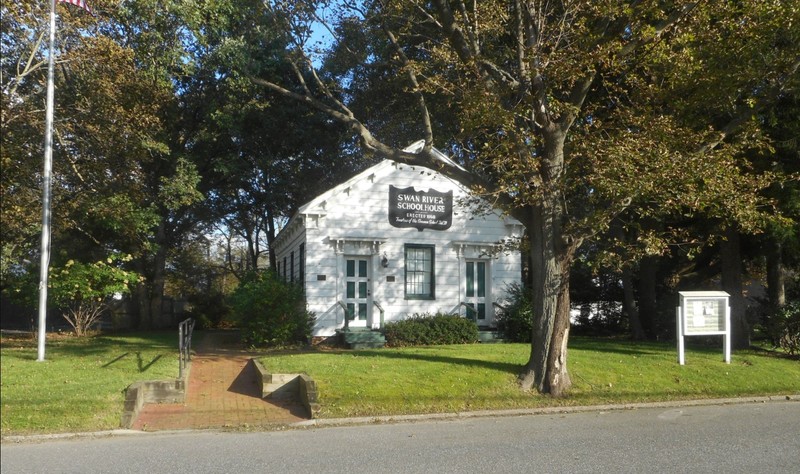
Swan River School (red outline) on 1858 Suffolk County map, East Patchogue area (Robert P. Smith)
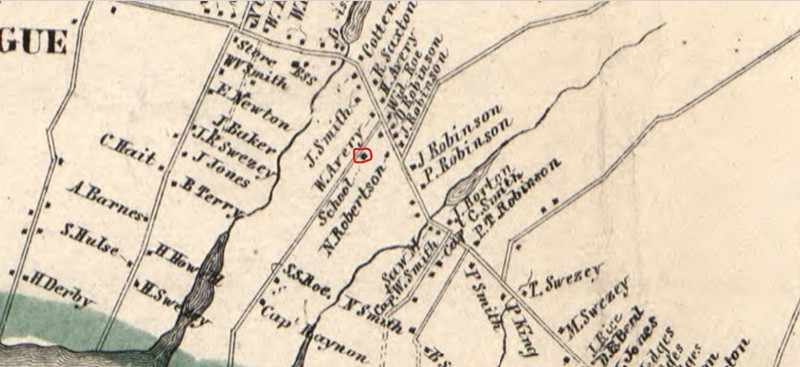
Wooden bench desks and pot belly stove in rear of classroom in 2016 photo (Robertson)
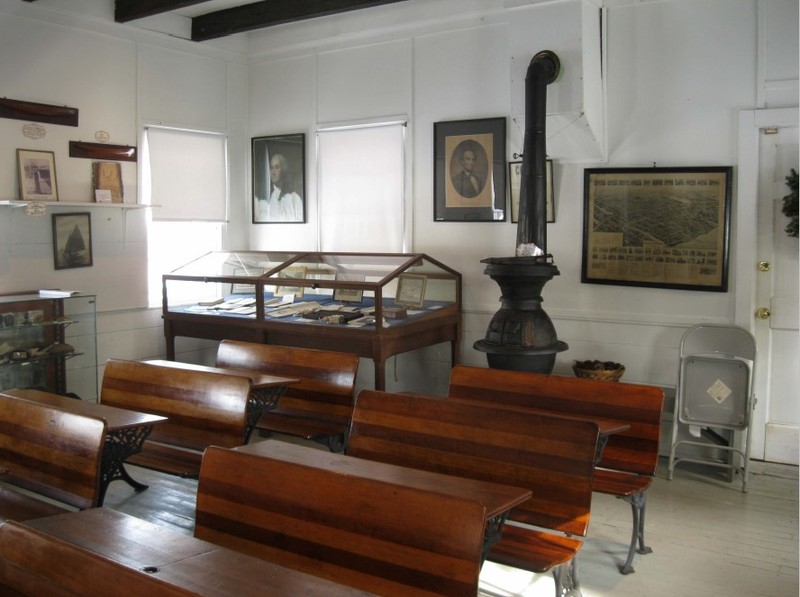
Schoolhouse in wintertime in February 2016 NRHP photo (Robertson)
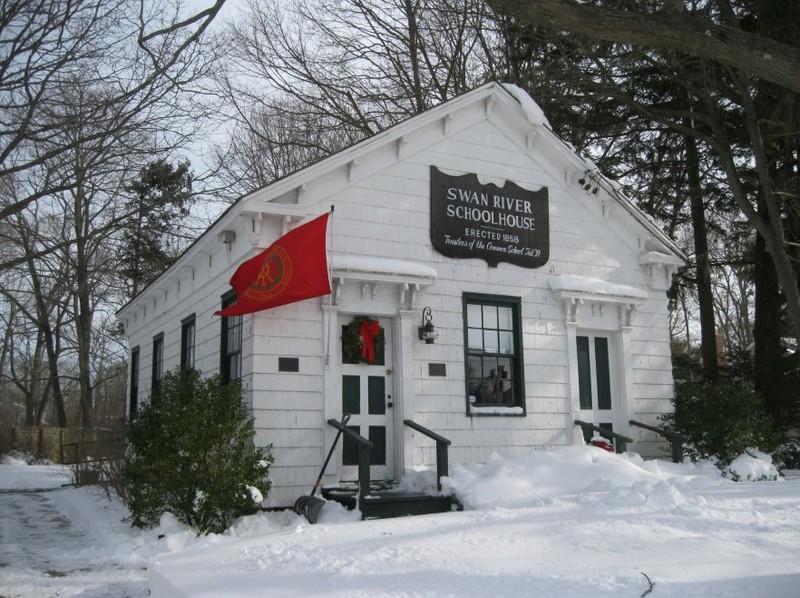
Original school bell hanging in front of classroom in 2016 photo (Robertson)
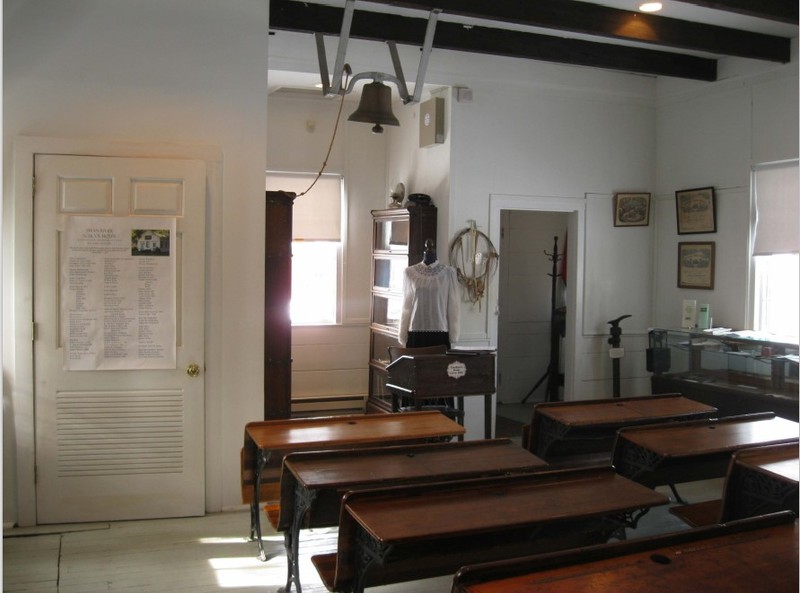
Backstory and Context
Text-to-speech Audio
The East Patchogue School District had one trustee when it was created in 1857, a man named Norton Robinson. Stephen and Huldahand Roe sold Robinson a lot for $25 and Robinson donated the lot for a school building. In the early years, parents paid a fee for their child to attend the school; this "rate system" ended in 1867 when Swan River became part of the newly-established Free Common School System. So, where is the Swan River? It is about four blocks west of and roughly parallel to Roe Avenue. The river was the site of mills which helped the area's population grow enough to need its own school.
The teacher at East Patchogue for the 1891 to 1892 school year was Miss Hattie Gambage. James H. Westcott was the principal of East Patchogue School for many years until he resigned in the spring of 1911. Miss Eunice Wells taught at East Patchogue until she resigned in October 1916 to become a private tutor for the children of Mrs. William C. Lester. A graduate of the Patchogue High School, Miss Anna Willey, began teaching at the school in the fall of 1919. In 1936, the East Patchogue School District was combined with the Union Free School District Number 24 of Patchogue. The one-room schoolhouse was then closed, and the students were sent to newer school buildings.
The Patchogue School District owned the one-room school building until 1962, when they voted to transfer ownership to the Town of Brookhaven for a museum. A sign above the front window, of unknown date, reads "Swan River Schoolhouse, Erescted 1858, Trustees of the Common School District 39." Wooden steps and railings lead to the two front doors. The building sides feature four windows. The rear of the structure has a door dating to 1962 leading to a handicapped-accessible concrete ramp to the backyard and a window. The front and back facades are capped by a cornice and cornice return with wooden brackets. The two front doors originally each led to their own vestibule/cloakroom; one has been converted into a restroom. The remainder of the interior is a single classroom. The eight benches inside were added to the school in the 1870s and used to be screwed into the floor; they are "Triumph Dovetailed Desks" designed by the firm A.H. Andrew and Company. The building did not have electrical lighting and heat until 1962.
The exhibits during its first ten years as a museum were on local history. The interior was then converted back into the former setup to show what the one-room schoolhouse looked like during its use. The Town of Brookhaven still owns the schoolhouse, while the Greater Patchogue Historical Society maintains the building and museum. Two sheds on the lot are not part of the National Register nomination; one was associated with the railroad and was moved to the property by the Greater Patchogue Historical Society. The neighborhood is now mainly residential with twentieth-century dwellings.
Sources
Anonymous. "Moriches." South Side Signal (Babylon, NY) September 19th 1891. 3-3.
Anonymous. "Of Brief Personal Mention." County Review (Riverhead, N.Y.) March 3rd 1911. 1-1.
Anonymous. "The News of Interest on the South Side: Good Ground." County Review (Riverhead, N.Y.) October 13th 1916. 9-9.
Anonymous. "Through Easport, The Moriches, Patchogue, Etc.: Patachogue." County Review (Riverhead, N.Y.) November 21st 1919. 2-2.
Greater Patchogue Historical Society. Swan River Schoolhouse, History. January 1st 2018. Accessed May 26th 2021. https://greaterpatchoguehistoricalsociety.com/history.
Robertson, Cameron. NRHP Nomination of Swan River Schoolhouse, East Patchogue, N.Y.. National Register. Washington, DC. National Park Service, 2016.
White, Michael. Take a peek inside the Swan River School House, Greater Patchogue. August 16th 2015. Accessed May 24th 2021. https://patchogue.greaterlongisland.com/2015/08/16/take-a-peek-inside-the-swan-river-schoolhouse/.
White, Michael. Special ceremony marks Swan River Schoolhouse's Inclusion on the National Register, Greater Patchogue. October 2nd 2017. Accessed May 24th 2021. https://patchogue.greaterlongisland.com/2017/10/02/49103-special-ceremony-marks-swan-river-schoolhouses-inclusion-on-national-register/.
https://upload.wikimedia.org/wikipedia/commons/f/f1/Swan_River_School_House%3B_East_Patchogue%2C_New_York-2.jpg
Library of Congress: https://www.loc.gov/item/2013593235/
New York State Cultural Resource Information System (NYS CRIS): https://cris.parks.ny.gov/
NYS CRIS: https://cris.parks.ny.gov/
NYS CRIS https://cris.parks.ny.gov/
